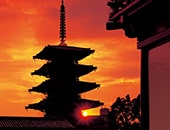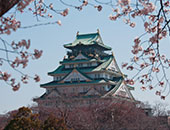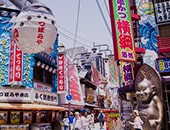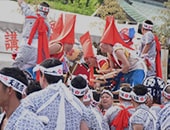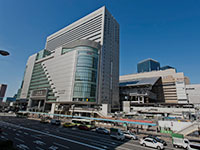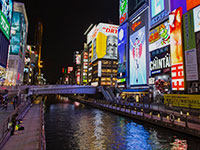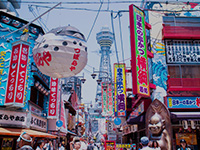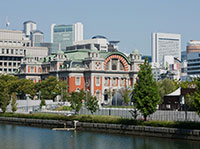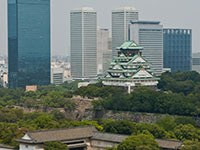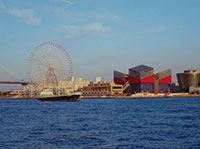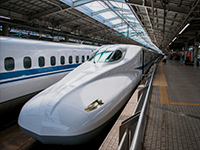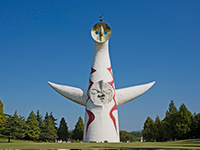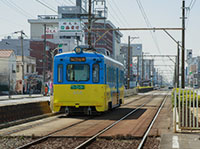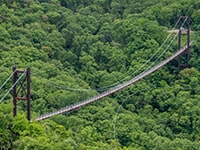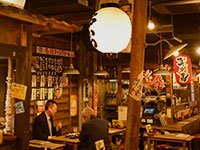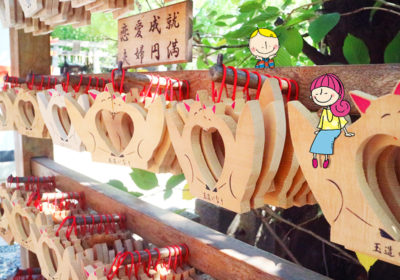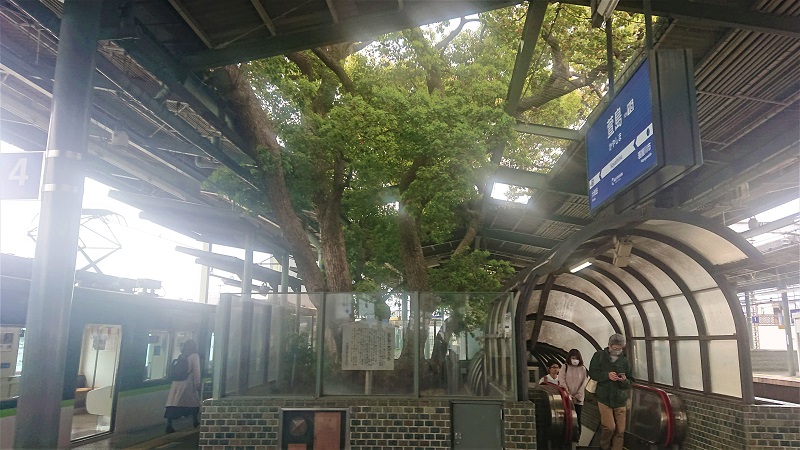

Supporter
Save the sacred trees! Unusual architecture at Keihan’s Kayashima Station & Hankyu Hattori-tenjin Station
Shinto shrines are a part of life in Japan, and locals start out every year by visiting shrines for hatsumode during New Year’s. One element of shintoism is the honoring of spirits in natural objects around us, like mountains, stones, and trees. Often shrines will have large trees, frequently camphors, that are considered sacred. These trees live for centuries, much, much longer than the lifespan of humans, thus giving off a sense of eternity.
Although these sacred trees tend to be found in shrines, there are actually two stations in Osaka where you can find sacred trees right inside train stations. Both the Keihan Kashiyama Station, located in Neyagawa and the Hankyu Hattori-tenjin Station in Toyonaka have their own sacred trees. These may possibly be the only stations in all of Japan built around sacred trees and the origin stories are both the similar. The stations were built on the grounds of old shrines where sacred trees were already growing. And although the trees were destined to be chopped down during construction, the rail companies decided to protect the trees, as they were so revered by the local residents.
[Contents]
■•Visible on Google Maps, the sacred tree of Kayashima Jinja Shrine poking out above the Keihan Kayashima Station roof
Kayashima Station is an elevated train station and it is located 16 minutes away from Yodoyabashi Station on the sub-express.
There is a 700 year old camphor tree that actually grows through the station, located on the west side of platforms 3 & 4. It is an impressive 20 meters tall!
A huge opening in the roof allows the branches to pass through the ceiling and clusters of bright green leaves sprout out of the top. You can even see the tree on the aerial photos in Google Maps.
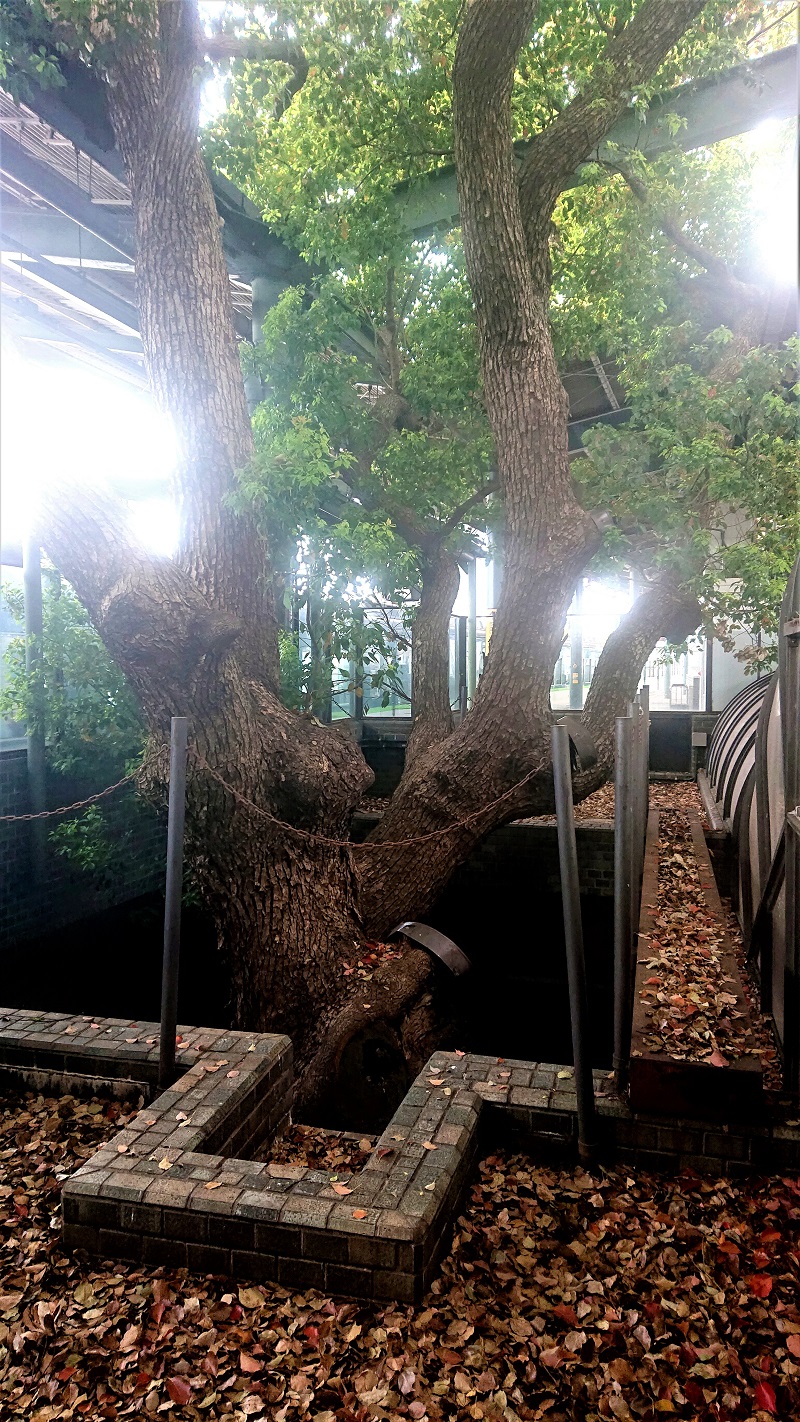
When you stand on the platform it feels more like you’re in a forest than looking at one individual tree.
Roots grow down into the earth underneath the station.
If you exit to the south and walk under the station, you’ll find Kaya Jinja Shrine. To the right of the main sanctuary there’s a a brilliant vermillion torii gate and a small banner that says, “Okusu Daimyojin” indicating that a deity lives within this tree.
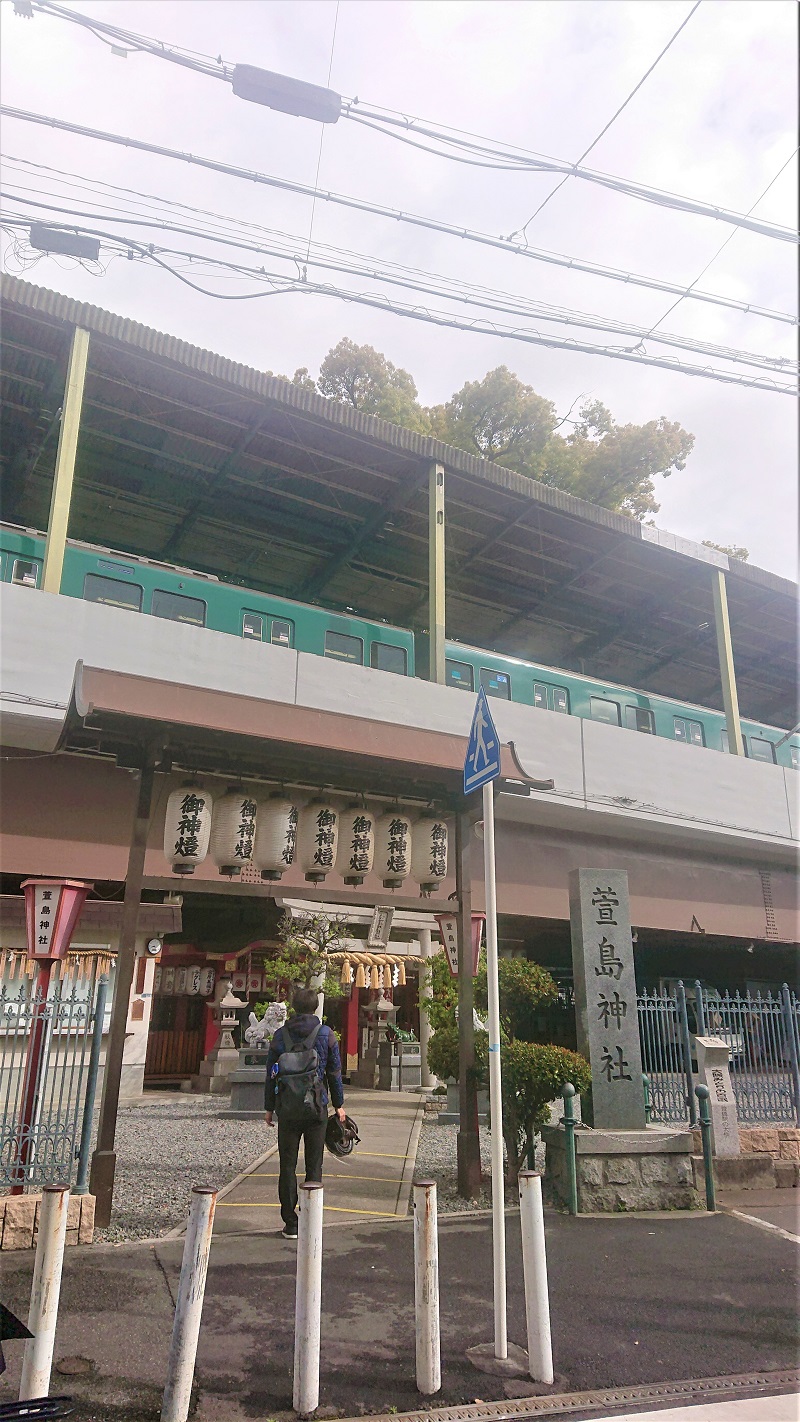
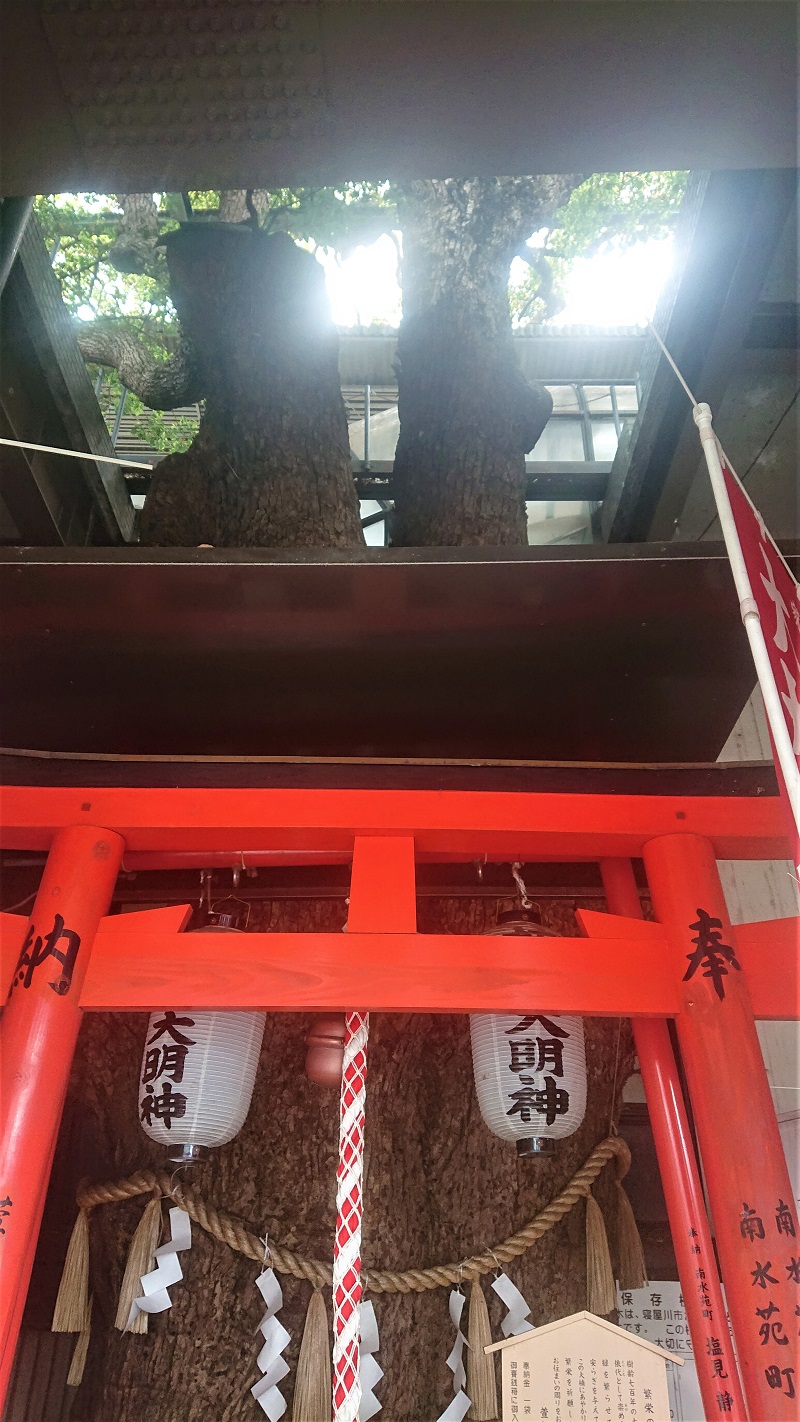
Behind the torii, a
In 1972, when Keihan Railway was expanding their transportation capabilities by building new four-way tracks and elevated railways along the Doi–Neyagawa signal station corridor, they purchased the grounds of neighboring Kayashima Jinja Shrine in order to extend the existing station building further south.
The giant camphor was slated to be removed, until residents spoke out for the tree and the rail company decided to preserve it.
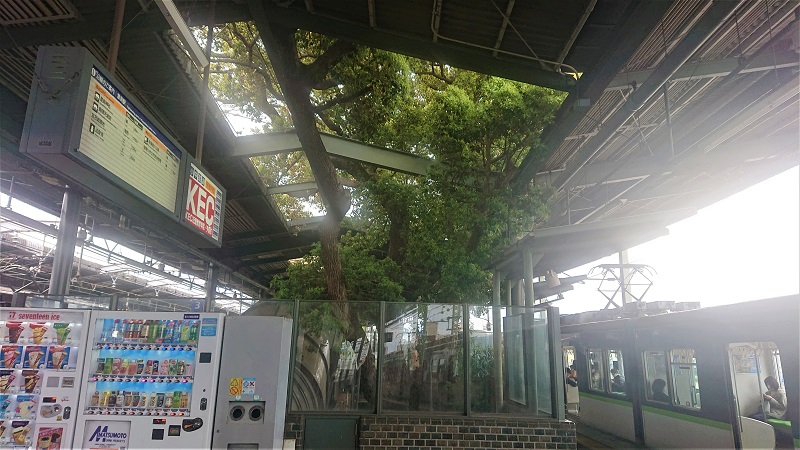
It must have been very difficult to design the elevated station exactly so that the tree would fit through the floor and roof. In 1980, the shrine’s main sanctuary was reconstructed underneath the station.
Next to the main sanctuary there is a stone monument explaining the tree’s origins, “During the middle of the Edo period (1603–1868) this area was a sandbar where many reeds and grasses grew. When people began to cultivate new rice paddies on the grass bar, the camphor tree spread its roots and lived alongside the people.”
■Like the deity Sugawara Michizane, locals adore the Hattori Tenjingu camphor tree
Just 11 minutes from Osaka-umeda Station on the local train, is Hankyu Hattori-tenjin Station. And right on the east side of the station is Hattori Tenjingu Shrine, where Sugawara Michizane (845–903)—an important scholar who is posthumously revered as the Shinto deity of learning— famously recovered from a leg injury.
The story of this station’s unique construction dates back to before the station mentioned above. This sacred tree at this station is also a camphor, but the station history dates back to the Meiji period (1868–1912).
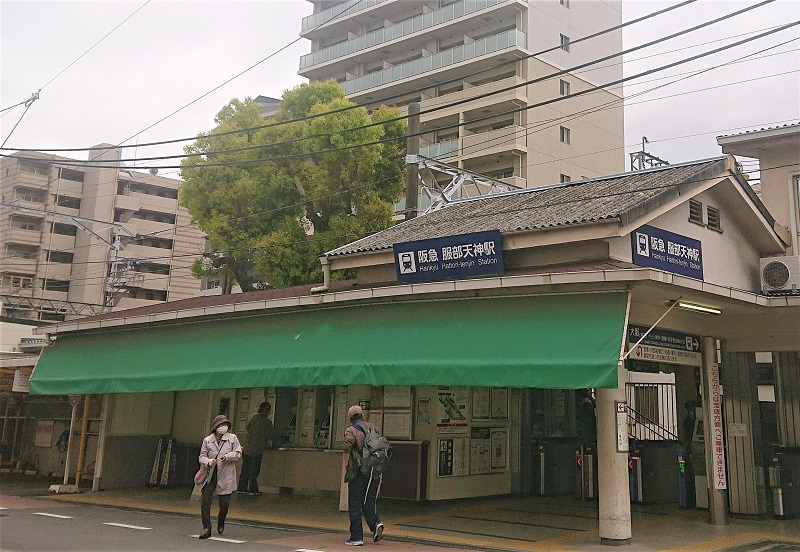
On March 10, 1910, the predecessor to Hankyu Railway, Minoh Arima Electric Tramway opened this rail line connecting Umeda and Takarazuka. The station here had a sacred tree on the platform the day it opened.
The train line cut through the grounds of Hattori Tenjingu Shrine, and because the residents loved the tree, the station was designed so that it would not be cut down. In this tale from over 100 years ago, the station was originally planned to preserve the tree.
Hattori-tenjin Station has separate entrances for trains bound for Osaka and trains bound for Takarazuka. When you enter the side for Osaka, you’ll see the tree right in the center of the platform. This sacred tree measures 3 meters around.
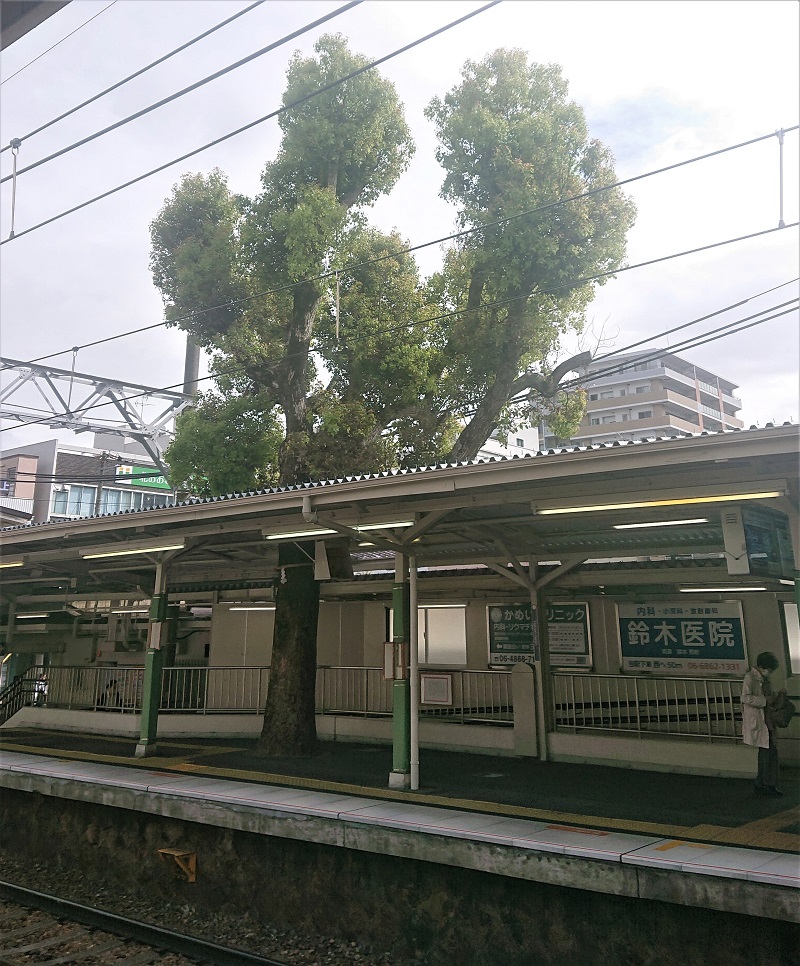
Because the branches and leaves are all above the roof of the platform, the tree just looks like a wooden pillar from inside the station. You might notice there is a small shrine attached to the tree just below the roof.
The best views of the tree are actually from the platform opposite the tree, on the side bound for Takarazuka. You can also get views of the foliage peeking out above the station from the nearby shopping arcade.
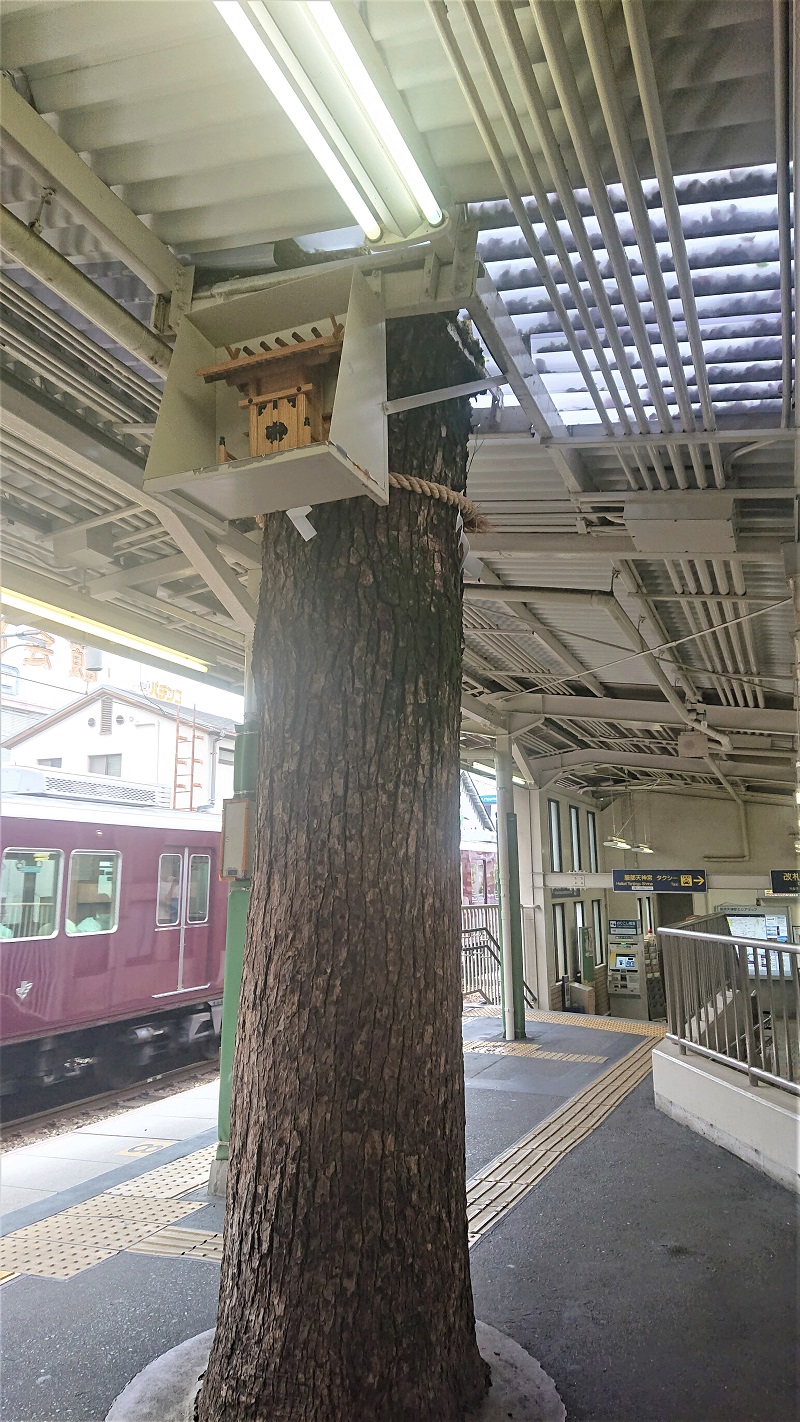
In the first station, Kayashima Station, the sacred tree is enclosed so you can’t touch it. But at Hattori-tenjin Station you can walk right up to the tree trunk and touch the bark.
When I visited, there was an older woman who walked up to the tree and touched it gently after she entered the station. Much like the deity to heal and protect feet and legs at Hattori Tenjingu Shrine, this tree is beloved by the people who live here.

Apparently, every year on August 24, there is a prayer ceremony for rail traffic safety on the Hankyu Railway held in front of this sacred tree.
These trees span multiple centuries and it’s so interesting to see how two different rail companies in Osaka came to this same conclusion to save the trees. The visuals are interesting and the custom is particularly heartwarming. I hope this tradition is carried on for future generations in Osaka.

Supporter
The contents of this page were current at the time it was posted, but may differ from the present.
Text visible in this map is based on information from Map Tiler and may differ from actual geographical names.

